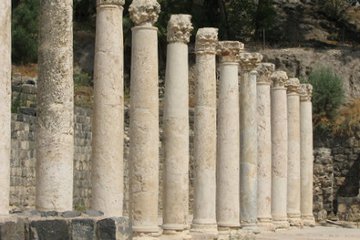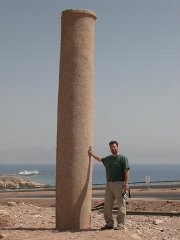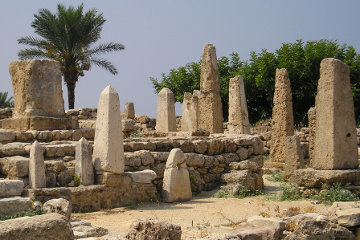Gregory of Tours
A few years ago I read the delightful History of the Franks by Bishop Gregory of Tours. As a history of the Franks, it is most instructive, for it tells how the barbarian Franks with their barbarous customs were gradually civilised by the Christian church. That is not to say that the church was uniformly virtuous, for its bishops were themselves Franks and shared in the outlook of their culture, overlaying it with a degree of tribalism that is horrifying to us.
A churchman could do no wrong, for example, and any king or nobleman who tried to curb the excesses of some of those churchmen came in for the severest censure. On the other hand, the existence of this independant body which paid lip-service to notions of equality and justice served as an effective check on the rapaciousness and cruelty of the Frankish lords.
However, interesting as all that is, it is not the reason why I mention the pious bishop. At the start of his history he gives an overview of world history which, for him, means Bible history. (The origins of the Franks interest him not at all, nor does Greek or Roman history!) According to the lights of his time, Bishop Gregory was a most careful and scholarly historian, who took pains to ensure that the things he set down were actually true - yet we smile at the absurdities he perpetuates.
Take, for example, his account of the Exodus.
"Since many authorities have made varying statements about this crossing of the sea I have decided to give here some information concerning the situation of the place and the crossing itself. The Nile flows through Egypt, as you very well know, and waters it by its flood, from which the inhabitants of Egypt are named Nilicolae. And many travelers say its shores are filled at the present time with holy monasteries. And on its bank is situated, not the Babylon of which we spoke above, but the city of Babylon in which Joseph built wonderful granaries of squared stone and rubble. They are wide at the base and narrow at the top in order that the wheat might be cast into them through a tiny opening, and these granaries are to be seen at the present day. From this city the king set out in pursuit of the Hebrews with armies of chariots and a great infantry force.
"Now the stream mentioned above coming from the east passes in a westerly direction towards the Red Sea; and from the west a lake or arm of the Red Sea juts out and stretches to the east, being about fifty miles long and eighteen wide. And at the head of this lake the city of Clysma is built, not on account of the fertility of the soil, since there is nothing more barren, but because of the harbor, since ships coming from the Indies lie there for the convenience of the harbor; and the wares purchased there are carried through all Egypt.
"Toward this arm the Hebrews hastened through the wilderness, and they came to the sea itself and, finding fresh water, encamped. It was in this place, shut in by the wilderness as well as by the sea, that they encamped, as it is written: "Pharaoh, hearing that the sea and the wilderness shut them in and that they had no way by which they could go, set out in pursuit of them." And when they were close upon them and the people cried to Moses, he stretched out his wand over the sea, according to the command of the Deity, and it was divided, and they walked on dry ground, and, as the Scripture says, they crossed unharmed under Moses' leadership, a wall of water on either hand, to that shore which is before Mount Sinai, while the Egyptians were drowned. And many tales are told of this crossing, as I have said.
"But we desire to insert in this account what we have learned as true from the wise, and especially from those who have visited the place. They actually say that the ruts which the wheels of the chariots made remain to the present time and are seen in the deep water as far as the eye can trace them. And if the roughness of the sea obliterates them in a slight degree, when the sea is calm they are divinely renewed again as they were."
The idea that the pyramids were Joseph's granaries did not, so far as I know, begin with Bishop Gregory nor did it end with him, for there are mediaeval paintings showing Joseph and his granaries which are clearly pyramids.
As for his geography, poor old Gregory had not the advantage of Google Earth and appears to be confusing reports of a canal between Cairo and the Red Sea (which existed down into Muslim times) with what may be the Bitter Lakes. Note, however, that he correctly speaks about trade with India, a country which must have been unimaginably distant and exotic to this semi-barbarian bishop.
What is most amusing, however, is his assertion that he has learned about the ruts of pharaoh's chariot wheels "from those who have visited the place"! In other words, he has actually spoken to pilgrims. We know that there were French pilgrims, for Egeria - who lived some two centuries before Gregory - was a French woman who travelled to the Holy Land, including to Mt Sinai, and left an account of her pilgrimage. Gregory sought out some of these and questioned them - and from them learned the story of the miraculous wheel ruts.

 | |
| The picture on the right is from a Ron Wyatt-style website and depicts "Solomon's Pillar". On the left are Roman pillars from Beitshan; notice the lip at the top of the columns in both pictures. |
I must admit that when I read that statement, I couldn't repress a chuckle. I often receive letters from people who have read the websites produced by Ron Wyatt and his ilk, asking me about pharaoh's chariot wheels supposedly found in the Red Sea. Some have even been on tours organised by these charlatans and are quite indignant at my dismissive attitude.

| |
| Genuine "Phoenician-style" memorial pillars in the Obelisk Temple at Byblos. |
Alas, it is not enough to visit a country; one also needs to have a modicum of education in such unimportant trifles as history, architecture, language and archaeology. I had one man who was most hurt about the comments elsewhere on the Digging Up the Past website regarding "Solomon's Pillar", for he had not only seen it but had had his photograph taken next to it - which he kindly enclosed for my edification.
It was an excellent photograph and I am sure that the gentleman himself was absolutely sincere in his beliefs - but there is no getting away from the fact that the pillar in the picture is unquestionably Roman in style and has nothing whatsoever to do with Israel's venerable king!
One of the reasons why we organise tours to the Middle East is so that we can give people an accurate picture of what they are seeing. Local guides, despite their education and training, have an eye on the tip at the end of the day and have been known to tell visitors what they want to hear rather than the facts. I have also listened in on lectures given on-site by some people with a church background and have found an unfortunate number to be peddling tales that put them in the Gregory of Tours class!
Of course, here on Digging Up the Past we have our own theory about chronology, a theory which is certainly not mainstream! However on the tours that I lead, I am always very careful - as indeed I am on this site - to distinguish between facts, the theory we hold and the theory that is commonly held.
For example, in Jericho it is a fact that certain walls were demolished by what appears to have been an earthquake and toppled outwards, down the tel. Conventional dating places them at the start of Middle Bronze, (that's another fact, by the way,) long before Joshua got anywhere near the place. (That's theory.) Our theory is that Joshua should be placed at the start of Middle Bronze. When I take groups around ancient Jericho I point to the walls, I talk about the period, then I outline both theories about where the story Joshua should be placed.
My attitude is that truth need never be afraid of facts. If a theory is contradicted by the facts it must be either amended or abandoned, but facts are always to be welcomed.
Digging Up the Past is organising a tour of Egypt, Jordan and Israel in April, 2012. This is the best time of year to visit the Middle East, neither too hot nor too cold and with clear, sunny days for memorable photographs. With the turmoils of the "Arab Spring" dying down and hoteliers desperate for business, there has probably never been a better time to go!
© Kendall K. Down 2011





